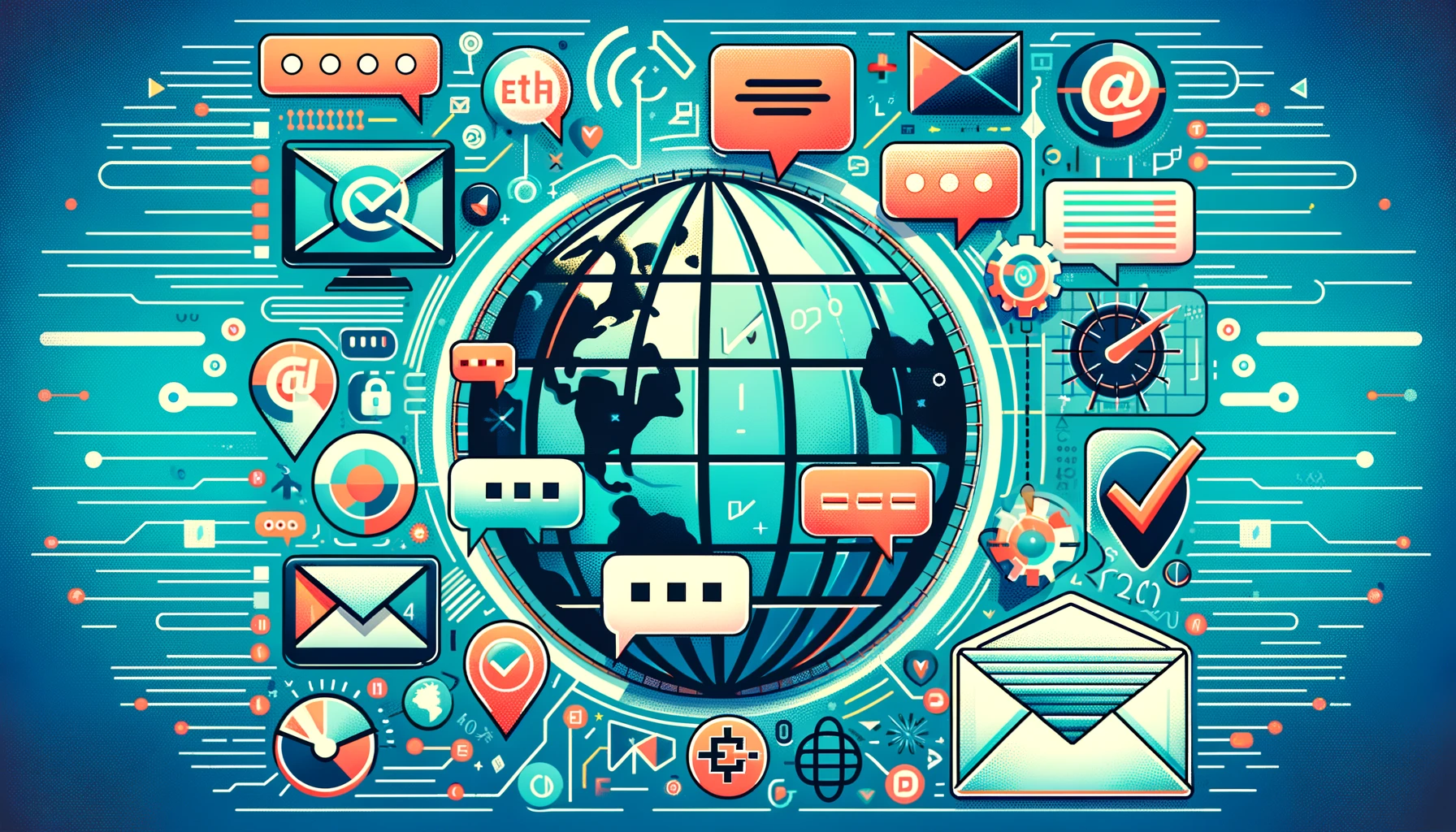2024's guide to best practices for bilingual and multilingual email newsletter
How to Create a Bilingual Email Template
Creating a bilingual or multilingual email template is essential for engaging a diverse, international audience effectively.
Create a Multilingual Email Template
To create a multilingual email template, start by choosing a flexible email platform that supports dynamic content. Use a template that allows you to easily add language-specific sections. Ensure each language version is clearly separated within the template, either through tabs or sections, allowing subscribers to quickly find their preferred language. Incorporating dynamic content blocks that display the language based on the subscriber's preference can streamline the process.
Best Practices for Bilingual Email Format
For a bilingual email format, maintain a clean and organized layout to avoid confusion. Begin with a language selection option at the top of the email, if possible. Keep the design consistent across all language versions to provide a cohesive brand experience. Use images and visuals that are culturally neutral or relevant to each language segment, ensuring your message resonates with every reader.
Steps to Create a Multilingual Email
Select Your Languages: Decide which languages are most relevant to your audience.
Design Your Template: Create a template that accommodates multiple languages comfortably, using clear headings for each language section.
Content Translation: Ensure all text, including the call-to-action (CTA) buttons and footer information, is accurately translated and localized.
Segment Your List: Organize your contacts based on language preference to send the email in the appropriate language automatically.
Best Practices for Multilingual Email Marketing
Adopting multilingual email marketing strategies can significantly enhance your global reach and customer engagement.
Choosing the Right Language for Email Content
Determine the preferred languages of your audience segments through signup data or customer preferences. This insight allows you to tailor your content more effectively, ensuring recipients receive emails in their native language. Employing a language selection option on your subscription form can simplify this process.
How to Include Multilingual Content in Your Emails
Incorporate language-specific content by using dynamic content blocks within your email template. This method automatically adjusts the content to match the recipient's language preference. Alternatively, create separate sections within a single email for each language, allowing users to scroll to their preferred language.
Managing Contacts in Different Languages
Effectively managing a multilingual contact list involves segmenting your audience based on their language preferences. Use your email platform's segmentation tools to organize contacts accordingly. This ensures that when you send out an email, each segment receives the message in their chosen language, enhancing personalization and engagement.
Implementing these strategies in your email marketing efforts can dramatically improve your engagement rates with a diverse, global audience, ensuring your message is accessible and relevant to all subscribers.
Why is it Important to Send Emails in Multiple Languages?
Sending emails in multiple languages is crucial for businesses looking to engage a diverse, global audience effectively.
The Impact of Multilingual Email Marketing
Multilingual email marketing significantly enhances your ability to communicate with a global audience by respecting their language preferences. This approach not only improves customer experience but also boosts engagement rates. By sending emails in the recipient's native language, you’re more likely to capture their attention and convey your message correctly, ensuring the content is accessible and relevant.
Benefits of Sending Bilingual Emails to a Diverse Audience
Sending bilingual or multilingual emails to a diverse audience demonstrates respect for cultural differences and personal preferences, which can strengthen brand loyalty. It allows businesses to tap into new markets and connect with clients on a more personal level. Additionally, it increases the effectiveness of your communication, as messages in the recipient's preferred language are more likely to be read and acted upon, enhancing overall engagement and conversion rates.
How to Track the Success of Your Multilingual Email Campaigns?
Measuring the effectiveness of multilingual email campaigns is key to refining your strategy and improving future communications.
Measuring Engagement with Multilingual Emails
Track engagement metrics such as open rates, click-through rates, and conversion rates for each language segment. Comparing these metrics across different language versions can reveal insights into how well your content resonates with each audience segment. This data is invaluable for understanding the preferences and behaviors of your diverse audience, allowing for more targeted and effective future campaigns.
Using Analytics to Understand Your Multilingual Email Performance
Leverage email analytics tools to delve deeper into the performance of your multilingual campaigns. These tools can help identify which languages yield the highest engagement and conversion rates, enabling you to allocate resources more effectively. Analyzing user interactions can also guide content optimization, ensuring that each language version is as compelling and relevant as possible.
What Tools Can Help You Create and Send Bilingual Emails Efficiently?
Choosing the right tools is essential for efficiently managing and executing multilingual email campaigns.
Email Translation Solutions for Multilingual Communication
Translation solutions, integrated within email platforms, can save time and ensure accuracy in your multilingual communications. These tools automatically translate your content into multiple languages, maintaining the original meaning and tone. However, it’s worth noting that for nuanced or highly targeted content, professional translation or native language review might still be necessary to ensure quality.
Choosing the Right Email Builder for Multilingual Templates
Opt for an email builder that supports multilingual templates and dynamic content. This functionality allows you to create one template that automatically adjusts the language based on the recipient's preferences, streamlining the email creation process. Features to look for include easy-to-use design interfaces, integration with translation services, and the ability to test and preview emails in different languages on various devices, from desktops to mobile devices, ensuring your message looks and reads correctly on any device.
Inagiffy: Your Ultimate Newsletter Marketing Partner
In today's crowded digital landscape, building genuine, lasting connections with your audience is more crucial than ever.
Enter Inagiffy – a premier newsletter marketing agency that understands the transformative power of well-crafted newsletters. We're not just about sending out emails; we're about curating stories, insights, and value that resonate deeply with your audience.
Our end-to-end solutions ensure that from ideation to delivery, every newsletter reflects your brand's essence and speaks directly to your audience's needs and aspirations. Let Inagiffy empower your brand, forging authentic relationships and driving engagement through the potent medium of newsletters.
Dive into the future of meaningful communication with us and watch your audience grow, engage, and thrive.
FAQs
How do I send an email in two languages?
To send an email in two languages, create a bilingual template that includes both language versions, either side by side or one after the other. Use clear headings to indicate each language section, or consider using dynamic content that adjusts based on the recipient's language preference, ensuring the email is accessible and relevant to all readers.
How can you write effective bilingual emails and reports?
For effective bilingual emails and reports, write concise, clear content in one language before accurately translating it into the second language. Ensure cultural relevance and sensitivity in both versions. It's beneficial to have native speakers review the content for nuances and accuracy, maintaining professionalism and clarity in your communication.
What is the language of email?
The language of email should align with the preference of your recipient to ensure effective communication. In a business context, English often serves as the default language for international correspondence. However, tailoring emails to the recipient's native language can significantly enhance understanding, engagement, and response rates.
Why am I getting emails in another language?
Receiving emails in another language can result from a mismatch in language settings on your email account or subscription preferences. It may also occur if the sender's email system automatically selects a language based on location data or incorrectly entered information. Check your settings and contact preferences to update your language preferences or contact the sender for assistance.

